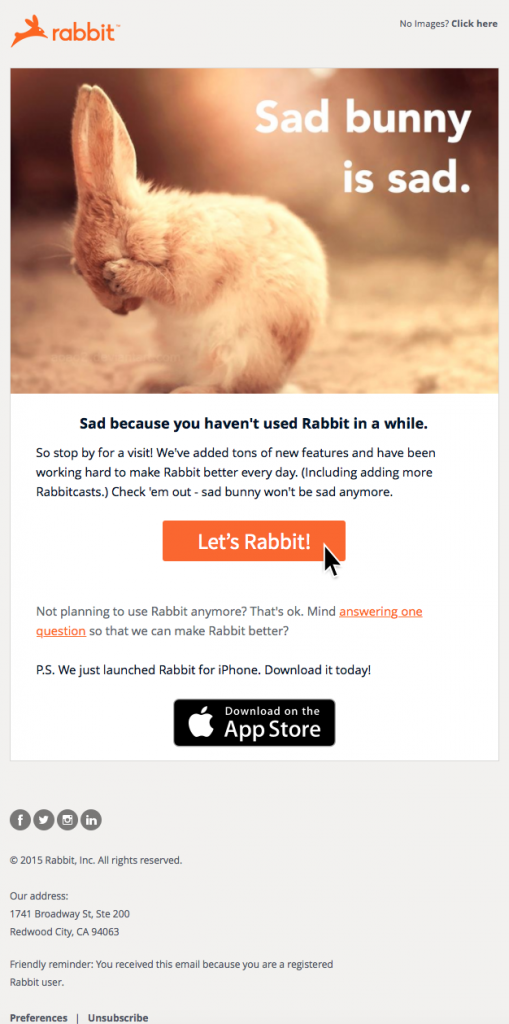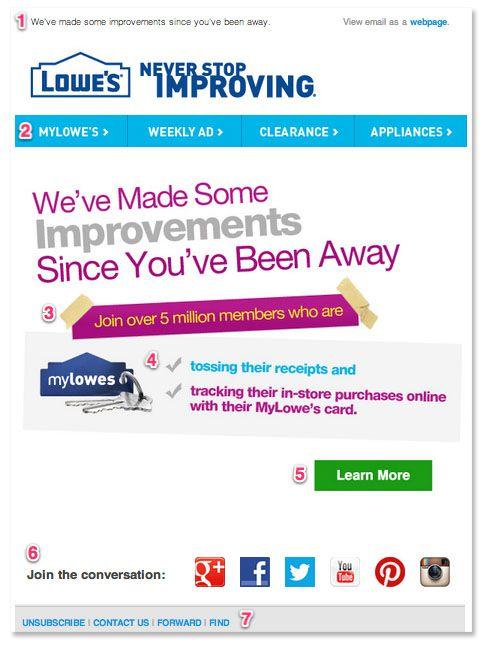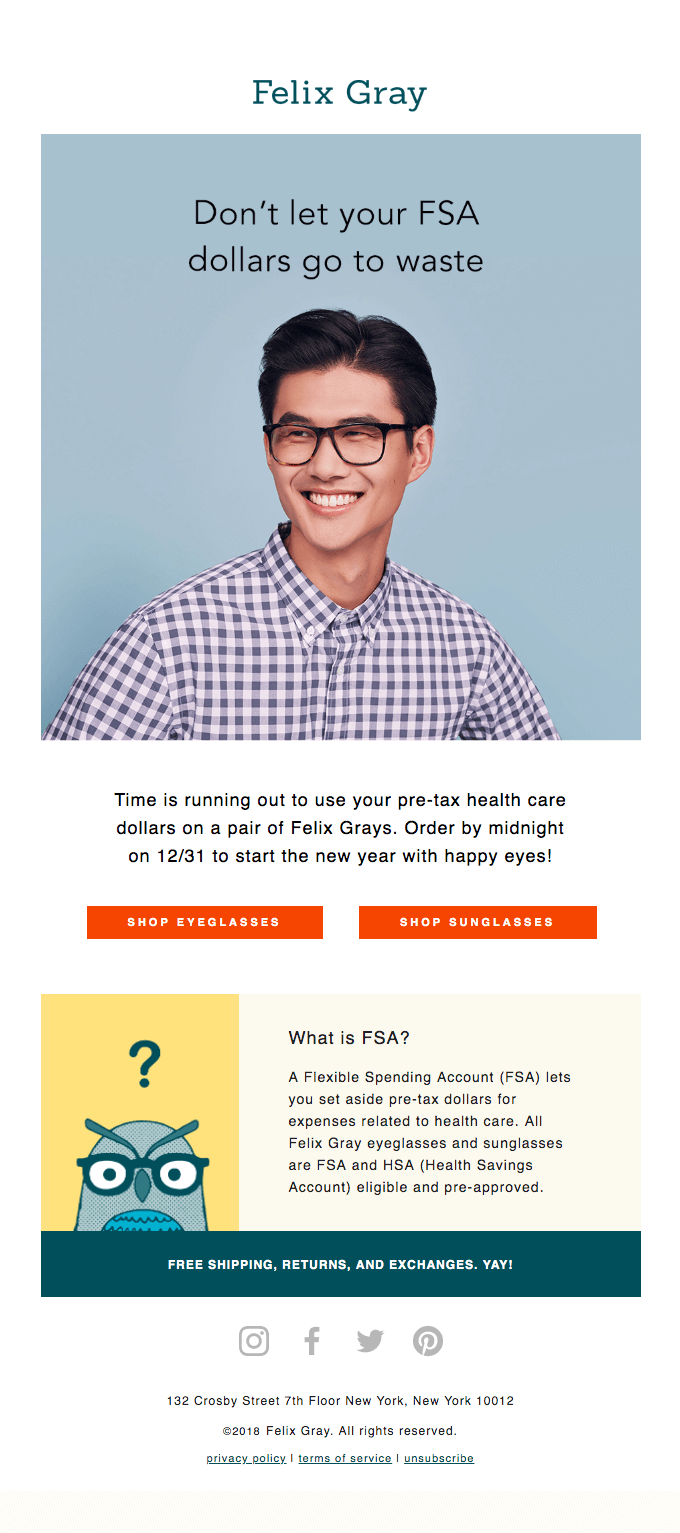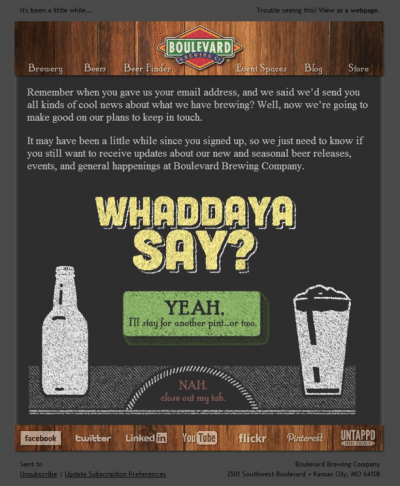This post has been updated as of June 2019
You may have read our post about best practices for email campaigns, where we share that a large amount of your success is dependent on the quality of your email lists.
Email marketing really is all about the quality of your subscriber lists and how you maintain them over time.
You can test your subject lines, optimize your email for mobile and authenticate your sends, but the long and short of it is that if your email mailing list is not built and maintained correctly, your email campaigns may never make it into the inbox to get opened and clicked.
So how does the quality of your lists affect the delivery of your emails and engagement, and what can you do to ensure your lists are in the best shape they can be?
In this post, we’ll focus on how your email lists affect the deliverability and engagement of your campaigns and provide actionable tips to get your emails delivered to the inbox.
Learn to build an email list in minutes by watching this video:
Start at the source
Is your list being built in compliance with permission and best practices in mind?
At Campaign Monitor, we require all your recipients to have expressly opted-in to receive your emails or to be your paying customers.
Building a solid opt-in list is the first step towards campaign success—if you play loose with the rules by adding general contacts, or from a contest without a mailing list opt-in checkbox, not only do you risk your sending reputation and the success of your campaigns, but you also risk punitive action and the possible closure of your account.
That’s never the outcome you want for your email campaigns. If you’re ever confused about what counts as opt-in permission or are unsure about your particular sending scenario, we have helpful resource guides, or you can simply ask us before sending.
If you were to send to email addresses that weren’t sourced with direct, express and clear opt-in permission, you would not only by breaking policies and risking account closure, but you could be adversely damaging your sending reputation and your business.
That kind of damage will follow you, and is not limited to your sends with a particular email service provider (ESP) such as Campaign Monitor. Coming back from the negative effects of such an issue is difficult, lengthy and can be the difference between the failure or success of your future email marketing efforts.
Internet Service Providers (ISPs) and their associated spam filtering systems closely monitor the impact and engagement levels of your email campaigns. Even a single bad send to a non-permission based list can destroy the deliverability of your future emails, when you are not compliant with industry standards and sending what is considered spam.
Don’t take the chance – play by the rules and ensure that all of your subscriber data is sourced with the direct and express opt-in permission of your recipients. It’s good for you, and it’s good for your recipients – it really is that simple! We recommend using a sign up form to collect opt-in permission.
Permission is not evergreen
So you have a list of opt-in list newsletter subscribers. The next question would be, how old is your list, and how regularly and consistently have you been in contact with those subscribers?
Quite simply, subscriber lists older than two years are not permitted for sending through Campaign Monitor and most other reputable ESPs.
Beyond that, we find that lists that have not been consistently sent to in the last 12 months can see significant issues with engagement and deliverability, as well as spam complaints from subscribers who have simply forgotten who you are and how or why they signed up.
The low open rates and high bounce and complaint rates you are likely to see in a list that has not been regularly contacted can negatively affect your email deliverability and as such, you’ll want to take some steps before sending to lists that haven’t been regularly engaged with.
Err on the side of caution with older lists that have not been sent to in a while. Never send to addresses older than 2 years, and with lists up to 24 months old, begin by sending to your recipients from the last 12 months and look at the results.
Verify your older lists with a third party service such as Kickbox or Briteverify to clean out inactive or erroneous addresses before sending. The nominal cost of cleaning your list is preferable to damaging your sending reputation and will help ensure that your list is best positioned for success.
When building an email list, don’t wait until you reach a certain subscriber number before sending campaigns – start engaging with subscribers straight away and send regular content to your growing list. Lists that are dormant see diminishing returns when it comes to engagement and you may lose some of your recipients to apathy.
ISPs will notice this kind of activity and also place weighting on the cadence of your sending – if you have not sent mass marketing emails in a year and then send an email to 100K recipients, that could be a red flag right out of the gate. When many of those recipients then bounce or mark your emails as spam, you will likely incur blocks and see other deliverability issues.
If you’ve had a significant lapse in sending or are switching ESPs, begin by sending to your most active subscribers and, you guessed it, look at those results. If you see a large number of bounces or spam complaints, you may want to verify the remainder of your list or take extra steps to mitigate the potential for further issues.
Monitor and maintain
Even the best email lists can go bad.
People who subscribed legitimately can become uninterested in your emails over time. Your send frequency or volume may not be the right fit for some subscribers, your content may not be on point or as sharp as it once was, or some email addresses on your list could have simply fallen out of use.
Your email list is an investment that can reap dividends for years to come, but it requires some maintenance to reach and maintain its zenith.
Monitoring your lists and looking for changes in key performance metrics like open rates, click-throughs, unsubscribes, bounces and other indicators is important in identifying issues and helping maintain balance and quality in your subscriber list.
An upwards swing in complaints with an upload from a new data source might mean that your sign up form isn’t quite compliant or requires some clearer messaging.
A heap of bounces from erroneous addresses might mean that your contest form has been targeted by spambots or by people with no intention of being added to your mailing list.
Dwindling open rates over successive sends may point to a need for tightening up your content, a lowering of send frequency or it may perhaps indicate that your list is in need of a spring cleaning.
The key here is to monitor your results and then to take action or reach out to your ESP for guidance when you identify that something is wrong.
Open rates very rarely improve on their own. Think of your potential engagement issues as having a snowball effect. Low open rates or high spam complaint rates are a clear signal to ISPs that people don’t want your emails – as a result, they can block or filter your later sends which can lead to even more engagement issues.
Furthermore, those engagement issues are usually an indicator of a problem that will want to be addressed promptly – whether it be with the source or management of your lists, your campaign content or something else entirely. Ignoring the issue and hoping your spam complaint rates will lower or that your open rates will improve over time is not the best approach.
Be proactive and ask for help if you need it. We want your email marketing campaigns to be a success and are happy to help wherever we can.
Re-engage for the win
A re-engagement campaign is one of the best options for a list suffering from issues with poor engagement, spam complaints or if you simply want to ensure that your list is full of your most active and engaged recipients.
The idea here is that you send a series of re-engagement campaigns to your inactive or disengaged subscribers as a way of both re-engaging those people and also identifying the people who are genuinely uninterested in your campaigns.
Re-engagement campaigns let your subscribers know that you understand they haven’t been active in a while and that you want to continue emailing them, only if they’re still interested. You want to remind your inactive recipients what they’re missing and give them a clear call to action so they can easily confirm whether or not they would like to remain on your subscriber list.
Although not a typical re-engagement campaign, check out this example from Rabbit that encourages subscribers to come back to the site and includes a one-question survey to get feedback.

In any re-engagement campaign, make sure to include a confirmation link for your recipient to indicate their continuing interest which would then automatically populate a list of confirmed and active subscribers in your account. Having confirmed their permission, those subscribers have demonstrated their continued engagement with your brand and you should see improved results that will help build the foundation of a strong sending reputation.
You would then want to remove anyone who chose not to confirm their permission via the re-engagement process from your lists. While it can be difficult to consider removing subscribers from your list, these uninterested subscribers can adversely affect your chances of getting your campaigns to your active recipients.
A one-time re-engagement campaign to an inactive list is a good start – a regular course of re-engagement every couple of months is even better. This can help you maintain your sending reputation and strong results but will also help you curb any decay in your list before it negatively affects your sends.
Best practices for running a successful re-engagement campaign
Email list hygiene is all about making every subscriber count. If you have users who are taking up list spots, but not engaging, action needs to be taken. We’ve shown that it isn’t always about removal, but instead reaching out.
When you reach out, you’re following email list hygiene best practices. You don’t have to get rid of inactive subscribers right off—instead, you can try and win them back. Let’s go over some great emails that show exactly how re-engagement campaigns should function.
Lowe’s
 Source: Lowe’s
Source: Lowe’s
When you’re looking to reengage an inactive subscriber, you have to think about why they left in the first place. Maybe they felt the company simply didn’t have anything to offer them, at least via the email platform. This email from Lowe’s alerts subscribers to recent changes. This is always a good idea, as it revitalizes subscriber interest.
Felix Gray
 Source: Really Good Emails
Source: Really Good Emails
Since a re-engagement campaign should always remind the subscriber what they could be missing out on, it’s a good idea to note any unused perks they still have: in-store credit, coupons, or rewards points. In some cases, a customer may have forgotten their perks and could return to spend their rewards.
This is an opportunity to win them back. If they didn’t leave behind any credits or coupons that they’ll be missing out on, you could consider offering them a special deal to make a return a more alluring.
Boulevard
 Source: Boulevard Brewing Co.
Source: Boulevard Brewing Co.
If all else fails, don’t underestimate the value of simply asking your subscriber if they want to keep receiving emails. Sure, a good re-engagement campaign will offer incentives. There’s no guarantee these will work, though, so you can always reach out and ask your subscriber directly.
As shown in this example from Boulevard Brewing Co., the question doesn’t always have to be bland. You can integrate your brand’s elements into it and get creative. Doing this gives the email a little more character and a better presentation, which could entice subscribers to stick around.
Email list hygiene means knowing what email to send each subscriber at what time. If there have been updates since they last got in touch, an email discussing them could be best. If they have time-sensitive rewards that could expire, a friendly reminder is the best idea.
If all else fails, simply offering one last request concerning re-engagement can be the right move. Sometimes simply being asked is enough to make them return.
If you want to get really creative and try to salvage every subscriber as earnestly as possible, you can develop a full series of the emails like we showed in the last example.
Wrap up
Getting email deliverability right is like baking a multi-tiered cake. You can put on every layer of frosting and add the decorations, but if you use rotten eggs, your cake is always going to taste bad.
Your email list is the foundation of your email marketing and ensuring that you build and maintain your list carefully is imperative to the successful delivery and engagement of your emails.
Looking to re-engage your inactive subscribers? Learn to write the perfect email to bring them back.
This post was originally published in December 2015





